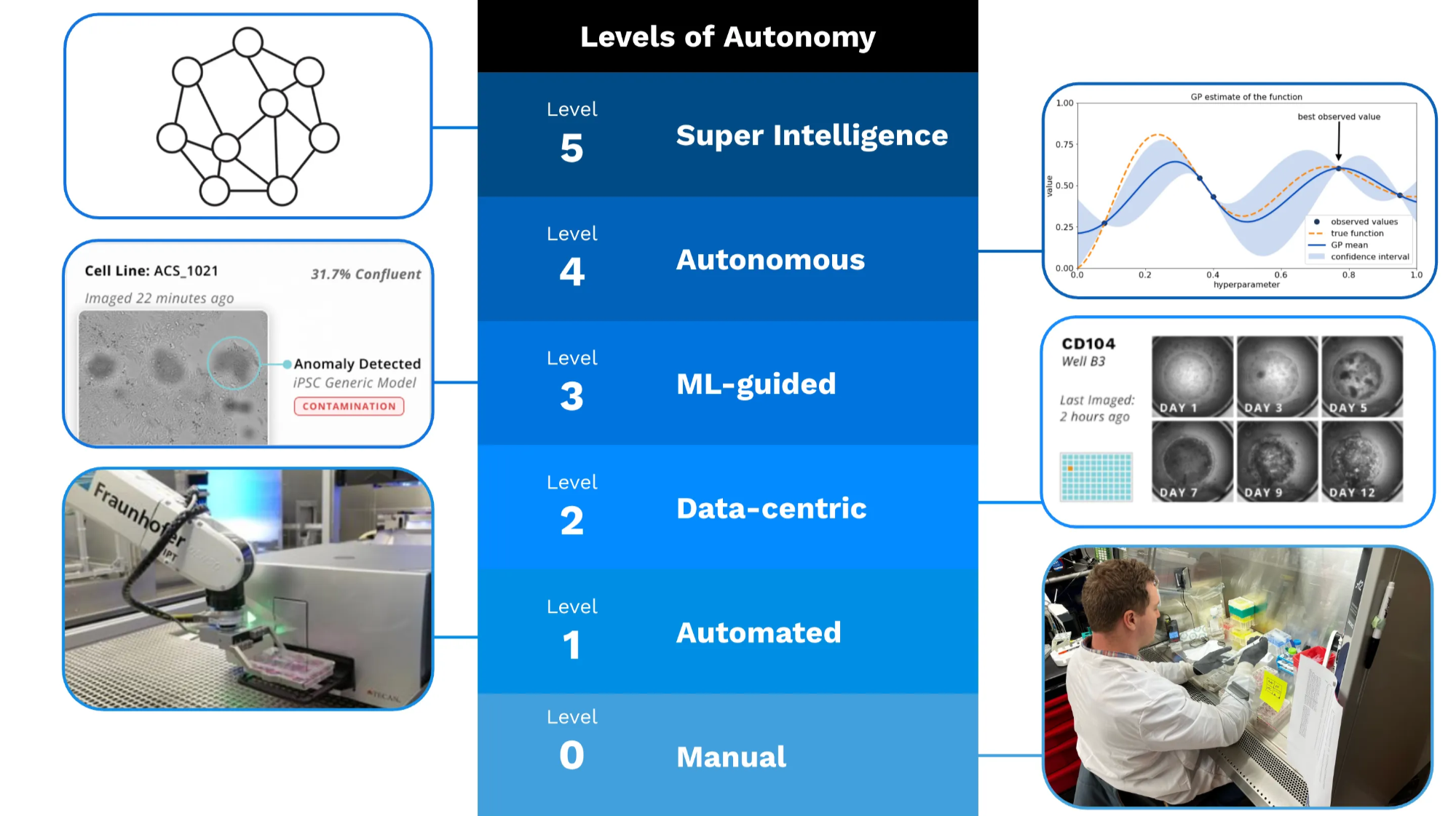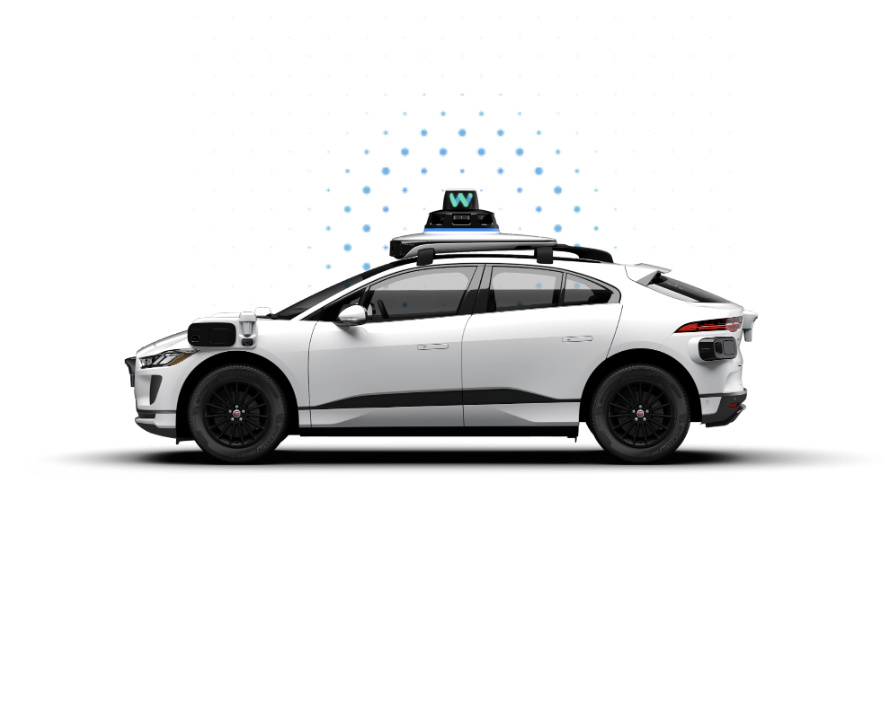Levels Of Autonomy In Biology Labs
When we look at the evolution of self-driving cars, the industry has established a widely accepted framework that clearly defines the different levels of autonomy. This framework ranges from complete manual control, where the human driver is responsible for every action, to full autonomy, where the vehicle can operate under all conditions without human intervention.
- Level 0: Manual
- Level 1: Cruise control
- Level 2: Lane assist
- Level 3: Co-Pilot
- Level 4: Partially autonomous (w/ remote assistance)
- Level 5: Fully autonomous
These standardized levels provide a shared language for researchers, engineers, regulators, and the public to understand where a given technology sits on the spectrum, and they help set expectations for safety, reliability, and capabilities at each stage of development.
Level 4 is where we are at today. I took my first autonomous WayMo ride from Daly City to Ocean Beach last year. I thought Level 4 was magical. I can’t wait for level 5.
Agreeing on a similar framework for levels of autonomy in biology labs will help us better communicate capabilities and its progress. I’d like to propose the following standard nomenclature for describing the different levels of autonomy in biology labs:

- Level 0: Manual. The traditional lab: no automation. Scientists pipette by hand, move plates, and adjust microscope wells directly. Full control remains with the human.
- Level 1: Open-loop automation. Robots assist with physical operations (e.g., liquid handling, plate movement) but act only on predefined commands.
- Level 2: Data-centric automation. Software structures and integrates experimental data, providing context and decision support while leaving judgment to the scientist.
- Level 3: ML-assisted decision making. Machine learning flags anomalies or suggests insights, but the human remains fully in the loop for all choices.
- Level 4: Autonomous experimentation. Algorithms vary experimental parameters, running closed-loop experiments but the skeleton protocols are still designed by scientists. This stage is often referred to as a self-driving lab.
- Level 5: Scientific super intelligence. An advanced AI system designs and executes experiments independently, drawing not only from lab data but also from literature and external knowledge sources.
Timeline
It took a century from the Model T in 1908 to today’s self driving WayMo taxi. It was 2 decades ago that the first autonomous car finished the DARPA Grand Challenge through the Mojave desert and today WayMo is only in six cities. We can’t afford to wait that long in drug discovery. Recursion gives us a glimpse of the solution but the industry overall still experiences increasing R&D costs and decreasing sales prices. Monomer’s mission is to speed up the transition from Biotech to AI-enabled Biotech building tools for increasing levels of autonomy.
There’s a lot to build both along each of the horizontal layers of the tech stack and within specific application verticals. None of this is easy. As much as I love AI and building infrastructure, in the end its about better understanding biology and getting real experiments to work. I’m sure many of you reading this have spent hours brute force tweaking liquid handling parameters, training teach points, writing custom scripts, or wrangling instrument APIs for better error handling.
Monomer Bio focuses on cell culture–based protocols, beginning with some of the most complex and demanding: iPSC-derived in vitro disease models. And have the most impact on levels 2 through 4 with the eventual goal of enabling scientific super intelligence by way of providing a re-inforcement learning environment for our partners training foundational models.
Next
In the next blog post I’ll unpack each of these levels of autonomy with more detail and illustrate each with biology examples.




